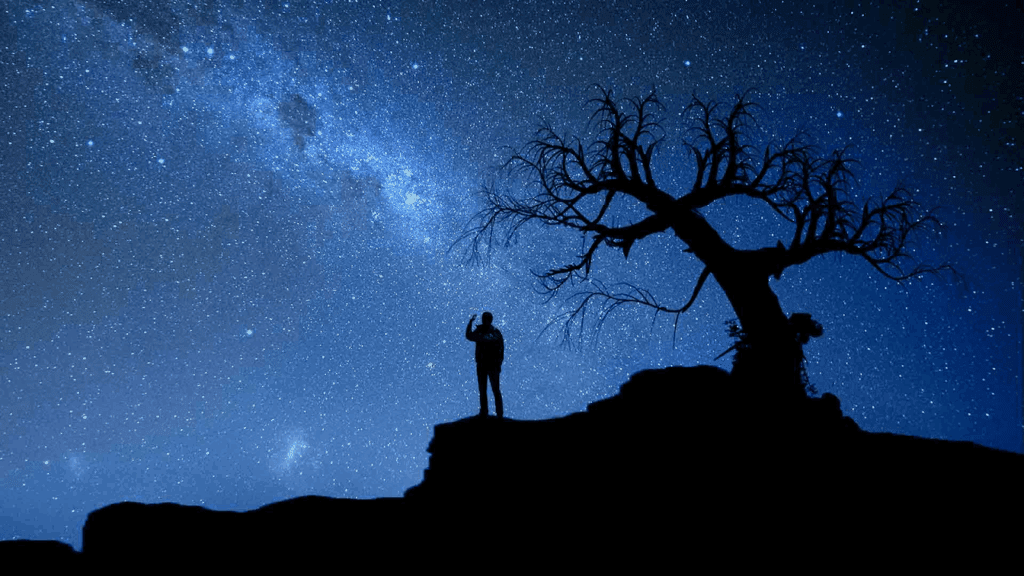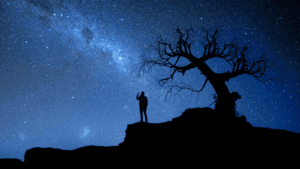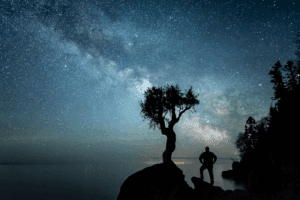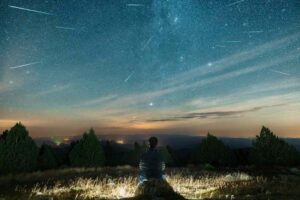November is shaping up to be a stellar month for stargazers and astro-nerds alike! From the glow of a supermoon to the fleeting streaks of meteors, there’s something for everyone in the night sky. Whether you’re hoping to catch the Taurids or Leonids, spy Uranus at its brightest, or simply enjoy the Moon’s lunar phases, the skies are packed with celestial treats. Make sure you’ve got your binoculars, telescope, or just your keen eyes ready, because November nights are about to dazzle. And yes, even if the Moon photobombs a meteor or two, it’s all part of the magic!

November 1-14 – Conjunction of Mercury, Mars, and Antares
From the beginning of November to 14 November 2025, just after sunset, Mercury and Mars will move closer together, until they form a conjunction towards the middle of the month. Adding to the delight is the fiery red star Antares, which will be above the pair. On the evening of 12 November, both planets share the same right ascension, separating by just 1°18′, a tight squeeze in the twilight glow.
November 2 – Conjunction of Mercury, Mars, and Antares
From the beginning of November to 14 November 2025, just after sunset, Mercury and Mars will move closer together, until they form a conjunction towards the middle of the month. Adding to the delight is the fiery red star Antares, which will be above the pair. On the evening of 12 November, both planets share the same right ascension, separating by just 1°18′, a tight squeeze in the twilight glow.
November 5 – Full Moon (Supermoon)
On 5 November 2025, we’ll be treated to the second supermoon of 2025, which is when the Full Moon coincides with the Moon’s closest approach to Earth, known as perigee. On this night, the Moon will swing in to just 356,833 km away, the closest it gets all year! That means it’ll look up to 14% larger and about 30% brighter than your average Full Moon. It’s subtle to the casual eye, but for keen stargazers and photographers, the difference is magical – perfect for moody nightscapes, dramatic moonrises, or simply soaking in the fact that a giant glowing rock is photobombing the sky a little more boldly than usual.
November 10 – Conjunction of the Moon and Jupiter
The Moon will pair up with bright Jupiter over the east-northeastern horizon. The Moon makes it easy to spot the gas giant, which shines steadily and can even reveal its four Galilean moons through a small telescope or binoculars. A simple, striking pairing for the naked eye or a scope.
November 12 – Last Quarter Moon
The Last Quarter Moon is when half of the Moon’s face is illuminated — the opposite half from the First Quarter. It rises around midnight and sets near noon, so it’s mainly visible in the late night to morning hours. This phase marks the transition from the waning gibbous toward the New Moon, as the Moon slowly loses its light each night.
For stargazers, the Last Quarter is a great time to explore lunar features along the terminator (the line between light and dark), where craters and mountains cast long shadows that make them pop. It’s also a perfect phase for spotting fainter deep-sky objects later in the night, since the Moon isn’t lighting up the early evening sky.
November 13 – Lunar Occultation of Regulus
The Moon will pass in front of Regulus (Alpha Leonis), creating a lunar occultation visible from Russia, Svalbard, eastern Greenland, and north-eastern Jan Mayen. The full occultation can only be seen from certain regions because the Moon’s position in the sky shifts by up to two degrees across the world. Even so, the Moon and Regulus will appear very close together in the sky for many other viewers.
November 17 – The Leonid Meteor Shower Peaks
The Leonids are back, sprinkling up to 15 shooting stars per hour across the sky at their peak. They’re famous for their occasional “storm years” every 33 years or so, when the sky absolutely erupts with hundreds of meteors an hour – the last big one was in 2001. While we’re not due for that kind of cosmic fireworks this year, 2025 is still shaping up nicely. The shower comes from dusty debris left behind by Comet Tempel-Tuttle, first spotted in 1865, and runs from 6–30 November, peaking overnight on the 17-18th. The good news? A slim crescent Moon will keep skies lovely and dark, so conditions are pretty much perfect. The Leonids favour the Northern Hemisphere because the radiant point is in the constellation Leo, which climbs higher in northern skies.
That said, we Southerners don’t miss out completely; Leo still rises in the east for the Southern Hemisphere, just not as high overhead. From Australia, the meteors will appear lower in the sky, which means you’ll see a bit fewer per hour compared to northern observers, but with the dark crescent Moon this year, it’s still well worth staying up late for. For the best view, head somewhere away from city lights after midnight. Look toward the constellation Leo for the radiant, but remember, those meteors can flash across any part of the sky.
November 20 – New Moon
A new moon is the first lunar phase when the Moon and Sun have the same ecliptic longitude. The Moon is aligned with the Sun and the Earth, and the side of the Moon that faces Earth is in darkness. The new Moon is not visible to the naked eye as it is too close to the Sun’s glare. It will be invisible in the night sky, making this prime time for stargazing and astrophotography, perfect for spotting faint galaxies and star clusters without the glare of moonlight.
November 21 – Uranus at Opposition
On 21 November, Uranus reaches opposition – meaning the ice giant is opposite the Sun in our sky, fully lit up, and at its closest point to Earth for the year. This is prime time to hunt it down, as it’ll be shining a little brighter than usual and visible all night long. Don’t expect Saturn-style rings or Jupiter’s stripes, though. Uranus is still a distant beast, appearing as a tiny blue-green disc at just 3.7 arcseconds wide. Through binoculars or a small telescope, it’ll look like a star with a hint of colour, but with a bigger scope and a focal length of at least 1500mm, you’ll be able to tease out its little planetary disc. A rare chance to say you’ve actually seen Uranus (go on, get the jokes out of your system now).
November 28 – First Quarter Moon
One-half of the Waxing Moon appears illuminated, with the other half in shadow, as the Moon is at a 90-degree angle to the Earth and the Sun.
November 29 – Conjunction of the Moon and Saturn
On the evening of 29 November, the Moon cozies up to Saturn in the night sky. The two will appear side by side after sunset, shining high overhead before slowly drifting toward the western horizon. With the Moon as your guide, spotting Saturn is easy – it’ll be the bright, steady “star” nearby that doesn’t twinkle. Even a small telescope will show off Saturn’s famous rings, though the glare from the Moon might wash out some of the finer detail. Still, it’s a lovely sight to enjoy with the naked eye, binoculars, or a scope. Definitely one of those grab-a-friend-and-point moments.
Experience these cosmic wonders from Stellara Resort, a luxury astrology and astronomy retreat designed for romantic getaways. Nestled in the heart of nature, Stellara offers private stargazing decks, computerized telescopes, and astrology-inspired amenities to elevate your celestial escape. Book your stay today and let the stars guide your journey.
Source: Astrogirl Australia. (2025, August 28). What’s up: A guide to what you can see in the night sky – November 2025. Retrieved October 24, 2025, from https://www.astrogirl-au.com/post/november-night-sky-2025




